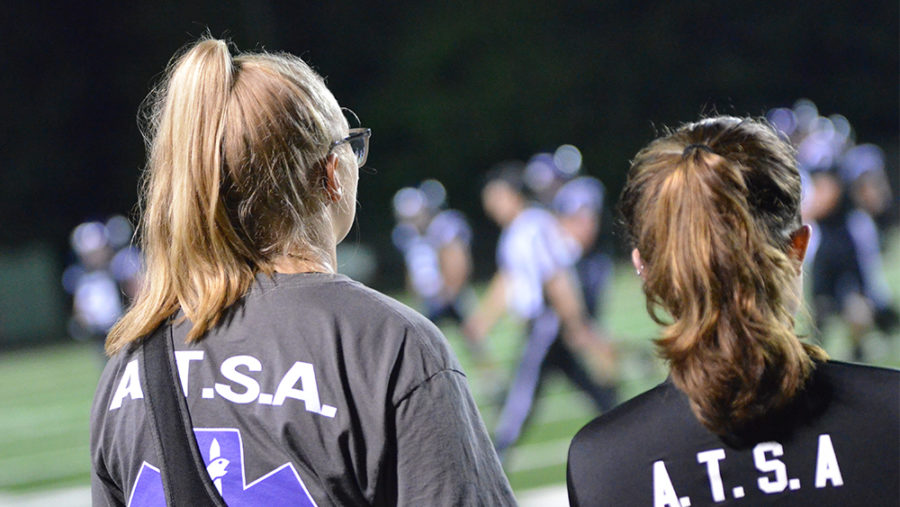An Inside Look at ATSA
Get to know the students that spend their time learning how to treat injured athletes
When a player gets injured on the field, the first people running to give assistance are almost always Tim Cocrane, the school’s athletic trainer, followed by a student aide. These student aides are a part of the Athletic Student Training Aide Program (ATSA). According to the ATSA website, “this program gives students the opportunity to get hands-on experience learning about the profession of athletic training and the umbrella of sports medicine.”
ATSA is sponsored by Cocrane, who has been running the program since he started it in 2013. This year, there are close to 25 students in the program, 10 of whom are currently helping for the winter season. The student aides participate on a seasonal basis and are requested to participate two to three times a week. Students involved learn through a PowerPoint and hands-on activities such as taping, splinting, and taking vital signs.
“The best part is being able to be super hands on. Mr. C cares a lot about the student trainers and tries to give them experience and knowledge about injuries,” said junior Ashlee Owens.
Members are expected to complete a lengthy checklist by the end of the season, highlighting the skills they are expected to learn. The list is made up of 60 skills, ranging from concussion tests to knowing the skeletal system.
“He makes you take these tests, like you have to memorize the whole skeletal system and stuff so memorizing that is pretty hard,” said junior Hannah Bulmer.
A large part of ATSA is volunteering on the sidelines during games. Student aides help with game set-up, pre-game treatments and in-game injuries. They are prepared for anything from minor injuries including abrasions, sprains, blisters to emergency conditions.
“There is a lot of energy when working on the sidelines. It’s a lot of fun being out there. There’s not much we can do when it comes to a serious injury, but it’s helpful to gain the experience,” said Owens.
Students joined the club for various reasons. Some are interested in pursuing training as a career in the future, or some just simply are interested in it now.
“I decided to join because I think I may want to go into a career to physical therapy, so I thought it might be the best way to find out if I liked it or not,” said Bulmer.


